Types of Artificial Grass (Ultimate Design Ideas Guide)
Welcome to our artificial grass ultimate guide including benefits, cost, installation tips, pictures & design ideas.
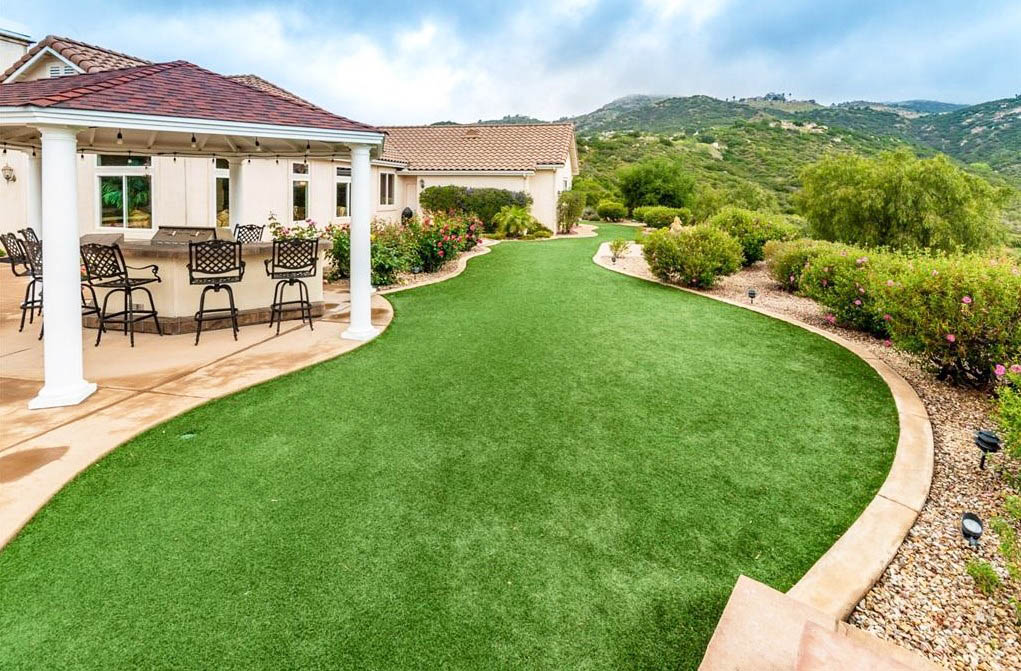
What is Artificial Grass?
As the name suggests, artificial grass is a synthetic alternative to natural grass. Each blade of grass measures between 1″ and 1 3/4″ or 25-45mm and is made of a polyethylene material – one of the more common forms of plastic.
How does it work? The individual blades of grass require support to remain erect, and to remain in the ground. This is where a layer of sand or thatch comes in, with both options producing high quality artificial turf results.
Artificial turf with thatch is supported by a frizzy fiber integrated into its lining, which not only strengthens the individual blades but makes the grass look fuller. This layer is made from polypropylene, polyethylene or nylon and encourages blade recovery.
Artificial grass without thatch can be supported with about a 0.8 inch deep layer of sand. This weighs down the grass, keeping it in place and fills the spaces between the blades keeping them erect. Sand supported grass is encouraged as a longer term investment, and is arguably more durable than thatch.
Benefits of Artificial Grass
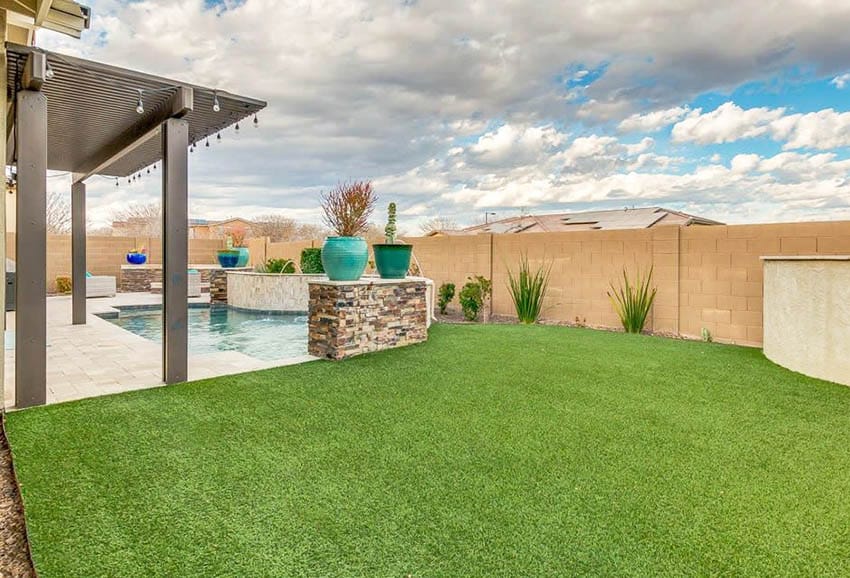
It’s low maintenance – Artificial grass doesn’t require any watering, fertilizing or mowing and therefore requires little maintenance to keep it looking its best. Perfect if you struggle with gardening, or it’s not really your thing.
Looks good all year round – Unlike natural grass which can often become parched during summer, artificial turf is composed of UV stabilisers which prevent any of its rich green colour from fading. The surface is also resistant to wind, hail, snow – you name it. Regardless of the weather conditions, the artificial lawn will remain looking crisp and fresh throughout the seasons.
Environmentally friendly – Without any growth in your lawn, you’ll no longer be needing your lawn mower – a gas guzzling machine that represents 5% of the air pollution in the US. Without the carcinogenic fumes emitted whilst mowing, you’ll be helping to protect the planet whilst protecting your own lungs too.
Water conservation – You’ll also no longer be using water to hydrate your lawn. According to the Environmental Protection Agency, one third of public water is used to water grass…with nearly 9 billion gallons of water consumed by lawns in the US each day. Less water usage will not only help the environment, but your energy bills too.
Popular Types of Artificial Grass
Here are some of the most popular types of artificial grass to use based on your needs.
Artificial Grass for Dogs & Cats
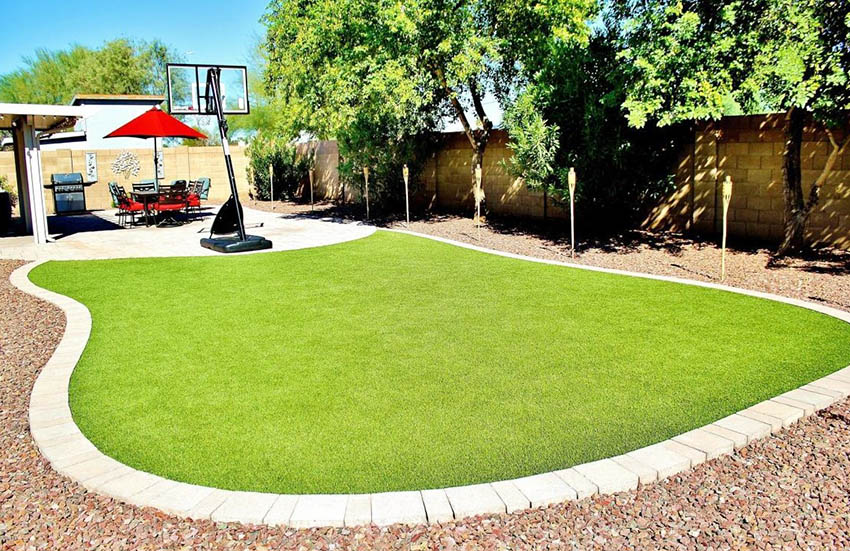
There are many manufacturers who produce high quality artificial grass, specifically for households with pets. It’s important that you know the different product options available so you understand how to best maintain your lawn with your pet(s) in town.
One of the biggest concerns regarding the artificial lawn, and having a dog (or cat!) is a build-up of urine on the surface. There’s a few things you can do to ensure that this doesn’t become a long term problem:
Ensure the lawn is installed correctly – the sub base must be permeable to allow the through flow of water (or urine!) into the lower layers to drain away. When installing the lawn, speak with the fitter to ensure they’re aware of your concerns of urine build up.
Maintain your lawn – this doesn’t need to be anything too time-consuming, although it will depend on how many pets you have that use the lawn to urinate on.
A hose down of the lawn once a month should remove traces of urine, and help with minimizing any ammonia smells. A professional cleaning product is advised alongside this, especially during summer when the smells can become stronger.
Consider pet hair – if your pet malts, then any hair which doesn’t get blown away could sit on the lawn surface and inhibit the free draining of water and/or urine. Make sure you hoover the lawn or even use a leaf blower to get rid of any stray hairs.
If you’re already struggling with the smell of pet urine in your lawn, there are many suggestions online of things you can do to neutralize the odors.
However, be wary as some of the products used can then end up making your lawn smell of cleaning agent. Zoflora disinfectant, diluted white wine vinegar and Jeyes Fluid Outdoor disinfectant are just a few ideas. Simple Green has also created a product which is highly recommended.
Artificial Grass Carpet & Tiles
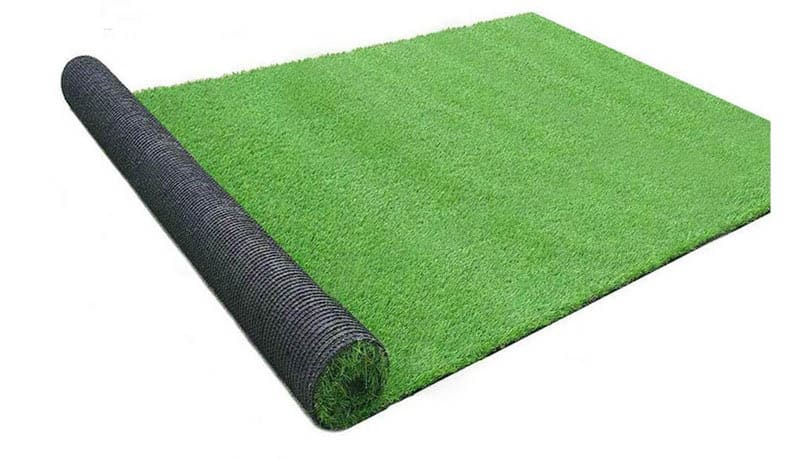
Whether it’s installed indoors or out, think of your lawn as a carpet. You could decide to purchase a roll of lawn, or a smaller section to enhance an area of your home. The smaller areas of carpet are perfect to use for terraces and balconies if you want to add a feel of nature. Artificial grass tiles could be ideal for this purpose too…
If you’re working with a smaller area, artificial grass tiles offer a practical solution. They’re certainly easier to install than larger rolls of turf, and good for patios. They can be moved around if required too.
This option isn’t as suitable for larger areas, simply because of the multiple seams which result from the interlocking tiles. The edges of the turf can also be susceptible to curling, so correct installation and maintenance is important.
Natural Turf vs Artificial Grass
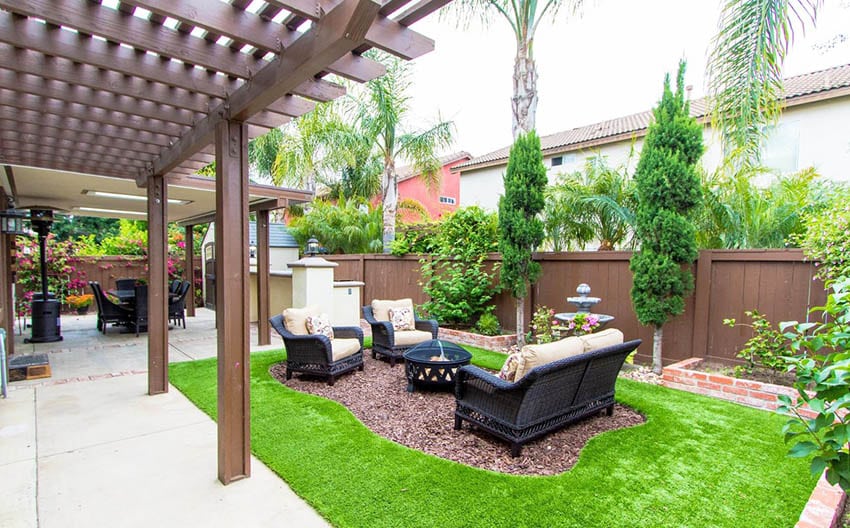
Natural grass is better for the environment – Yes, your artificial lawn helps the planet but there’s nothing that helps the planet better than nature itself! If you take an average sized healthy lawn, this can capture as high as 300 pounds of carbon a year.
Not to mention the wildlife. Plants and insects thrive within your lawn, and choosing the real thing will help to support the local ecology.
Natural turf can improve your mental health and well being – Research abounds on the connections between nature and mental health, and green spaces play a role in this. Evidence is growing on the links between horticulture and natural grass on improving human wellness.
Lack of silver biocides – Varieties of artificial grass produced specifically for dogs, contain silver ions which help to remove bacteria. The issue with these toxic ions is that once they drain into the water systems they come into contact with wildlife – having a devastating impact. Food for thought…
Artificial Grass Cost
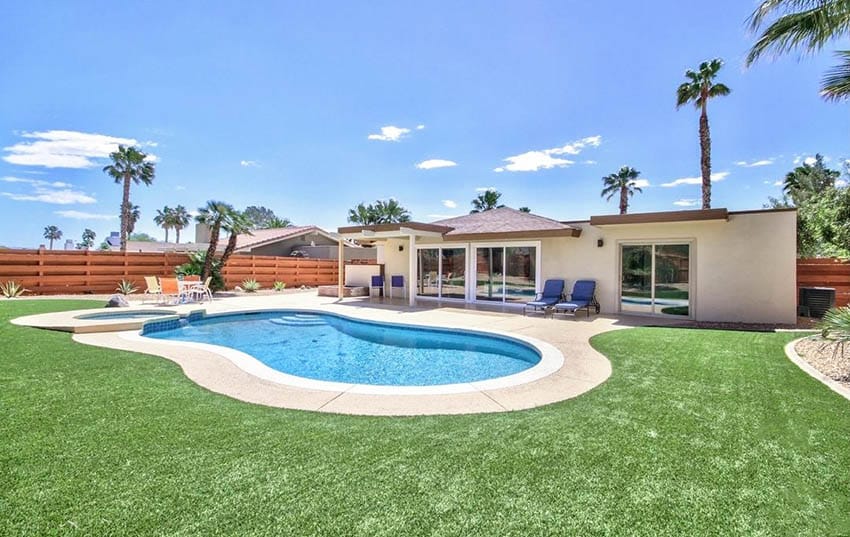
For a mid-size lawn of 1200 square feet you’ll be looking to spend in the region of $15,000. That may seem like a lot in comparison to natural grass, however artificial turf can last for 15 to 25 years. Natural sod typically runs around $1.35 a square foot but has an average annual maintenance cost of $1000.
If you’re willing to splash the cash for the most luxurious custom synthetic lawn design, you’ll be looking at upping the budget to $20 per square foot.
It’s worth getting samples of the lawn you’re interested in before you buy. Just like when you order a carpet swatch, you’re going to want to check the texture and feel of your lawn before you commit.
Artificial Grass Installation Cost
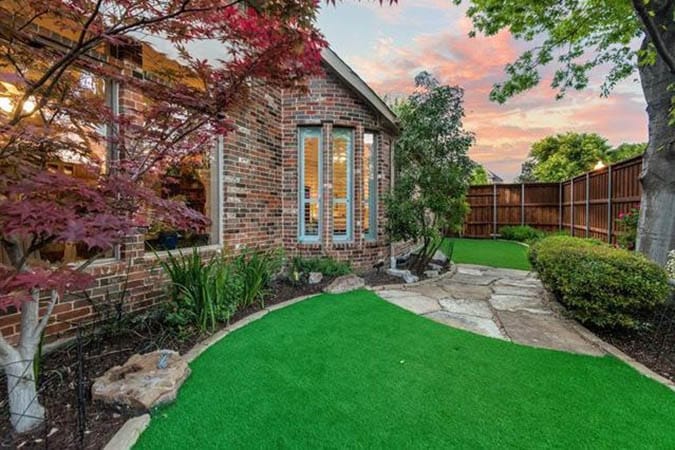
Costs will vary though depending on the shape of your lawn and its size. The labor cost to install a larger lawn can result in lower costs of around $6 per square foot, whilst lawns of a smaller size often work out to be more expensive.
Artificial Grass Installation
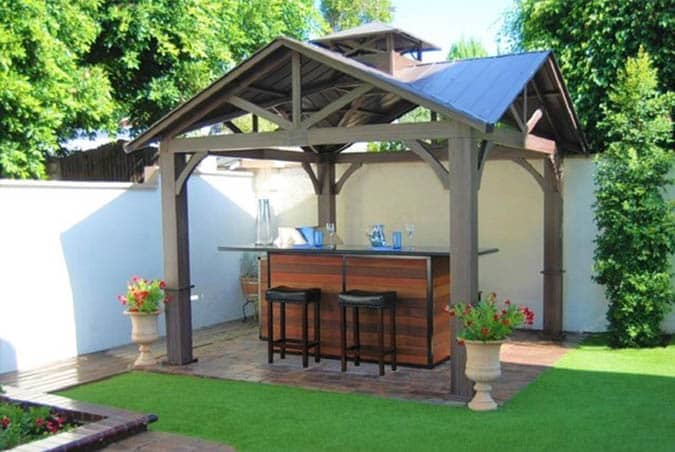
How to Lay Artificial Grass
Plan – the first and arguably one of the most important things you need to do is measure your backyard to determine how much artificial lawn, jointing materials and membrane is required. This stage will help you to minimize any wastage and save money.
Remove your lawn – cut squares into the grass measuring approximately two inches deep and ten inches wide. This will help you to remove the lawn in manageable steps and ensure you can focus on pulling up any roots underneath each square. If you water the lawn prior to this process, this should help with lawn removal.
Laying your base – If you’re looking at installing your artificial lawn over soil, a layer of granite or limestone chippings will help to ensure your sub base is free draining.
For the laying course; the layer of aggregate directly under the lawn, granite or limestone dust should be installed. On top of this, a geotextile membrane can be installed if desired, which will help to prevent the growth of weeds under the lawn.
Lay your lawn – Something to be aware of here is that if you’re laying two separate pieces from a roll or tiles, ensure that the grass pile is in the same direction.
Trim and join – Trim off any excesses to ensure your lawn fits neatly within the space. Join any individual carpet seams together.
Add sand fill – Brush over the laid lawn with in filler sand. Brushing with silica sand helps to ensure the individual grass blades remain erect and will help keep the grass in place.
How to Clean Artificial Grass
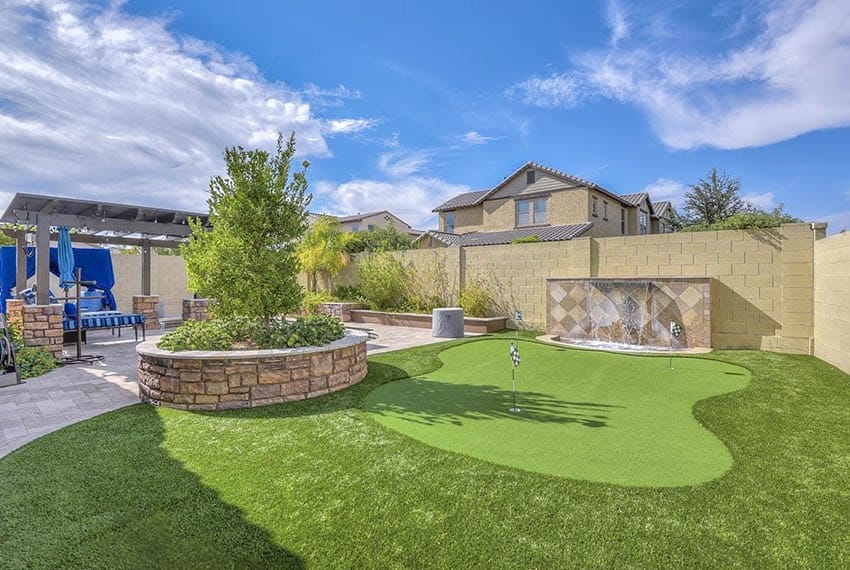
Alongside this, a few practical things you can do include:
Once a week
- Give your lawn a wash down to remove dust and any particle build up
- Use a rake/ a leaf blower to get rid of anything lying on the surface
Once a month
- Brush the grass using a stiff brush to remove dust and dirt
- Broom against the natural grain of the grass to encourage the blades to remain erect
If you have a pet who uses the lawn to relieve itself, you should naturally remove any solid waste immediately, and spray it down to wash away any urine. Lawn neutralizers as mentioned earlier in this article can help to counteract any lingering smells.
Artificial Grass Designs
Here we share an assortment of artificial grass designs for inspiration.
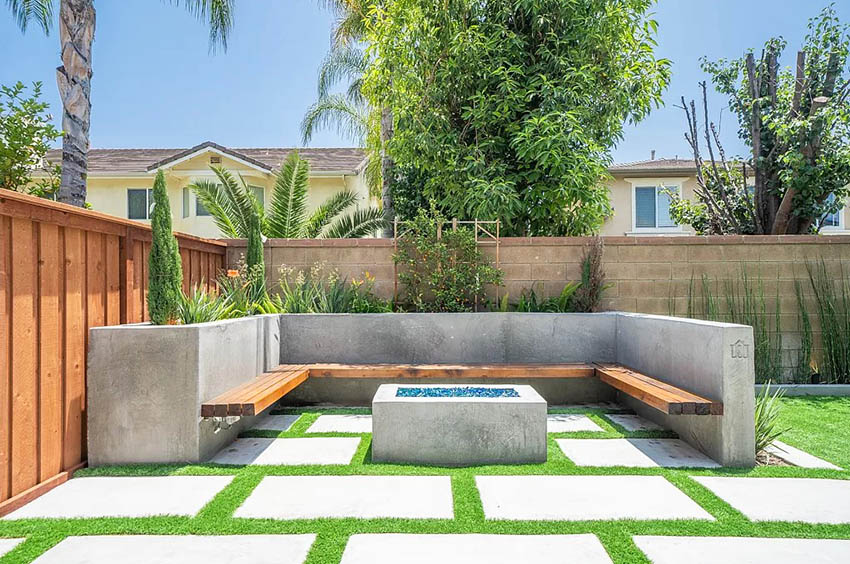
Artificial Grass Backyard
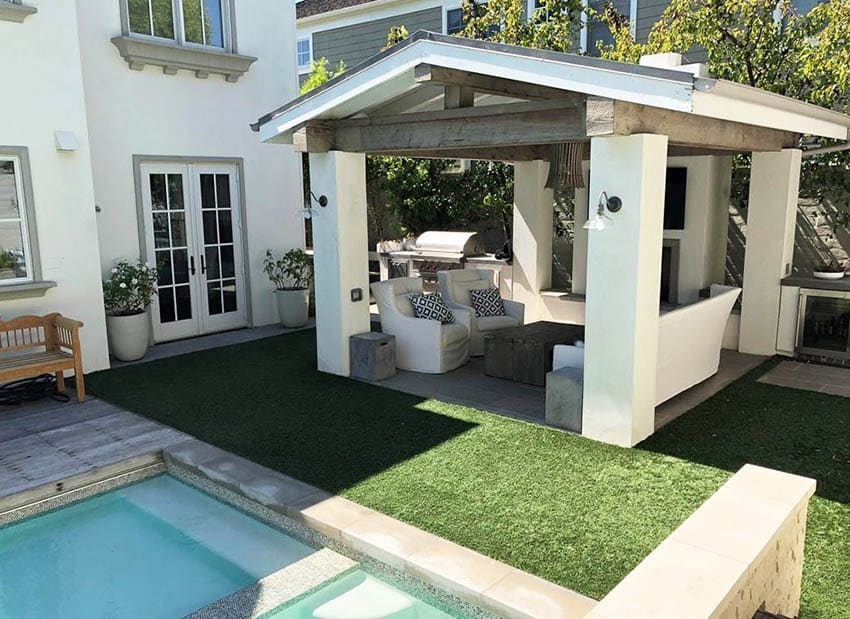
An artificial grass backyard is extremely beneficial in drought prone areas and to help limit maintenance costs over time. It is estimated that the installation of artificial grass will pay for its self in 3 to 4 years with money saved from having less landscaping and maintenance costs.
Artificial Grass Walls
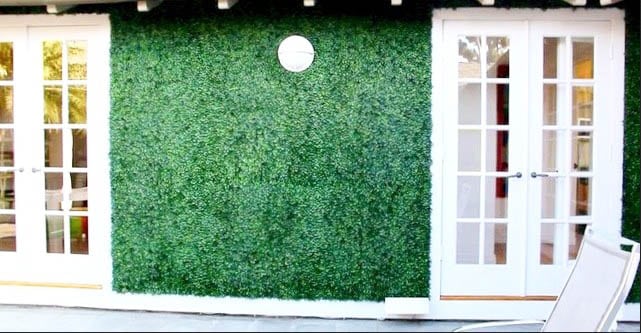
Artificial Grass Patio
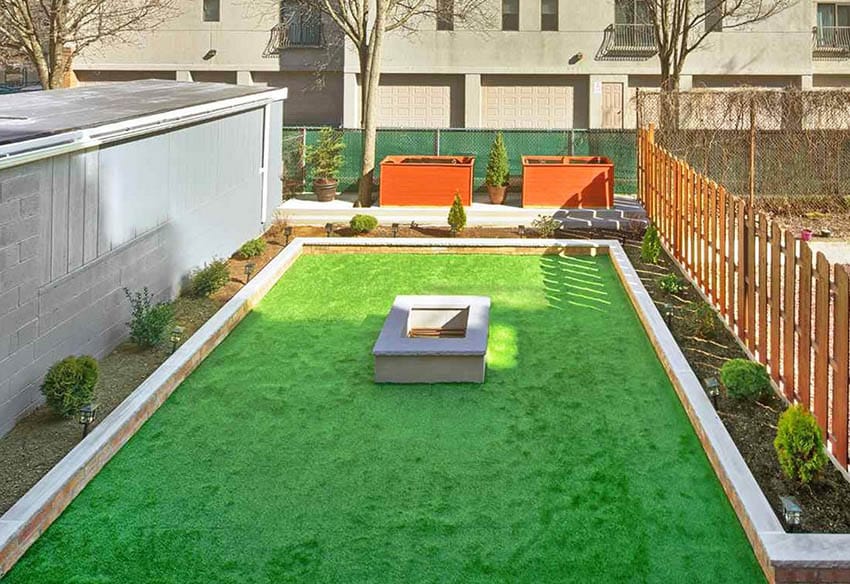
Artificial Grass Putting Green
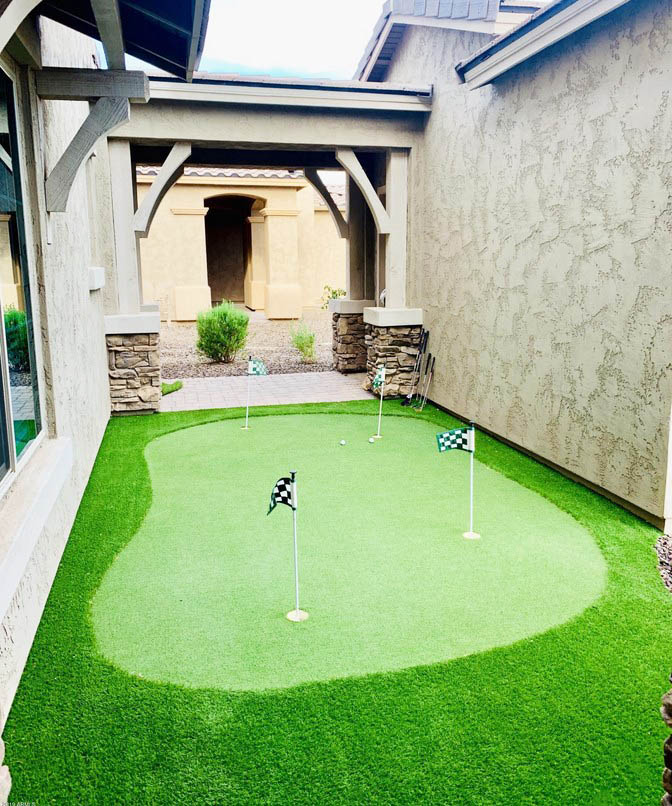
The cost of backyard putting green turf typically run from $18 to $40 per square foot. This cost includes materials and installation. Smaller greens will typically cost a little more per square foot since it will need to be worth the contractor’s time to do the job.
As a general rule of thumb, you will need at least 500 square feet of space for a proper backyard putting green with the average backyard design coming in at around 1500 square feet.
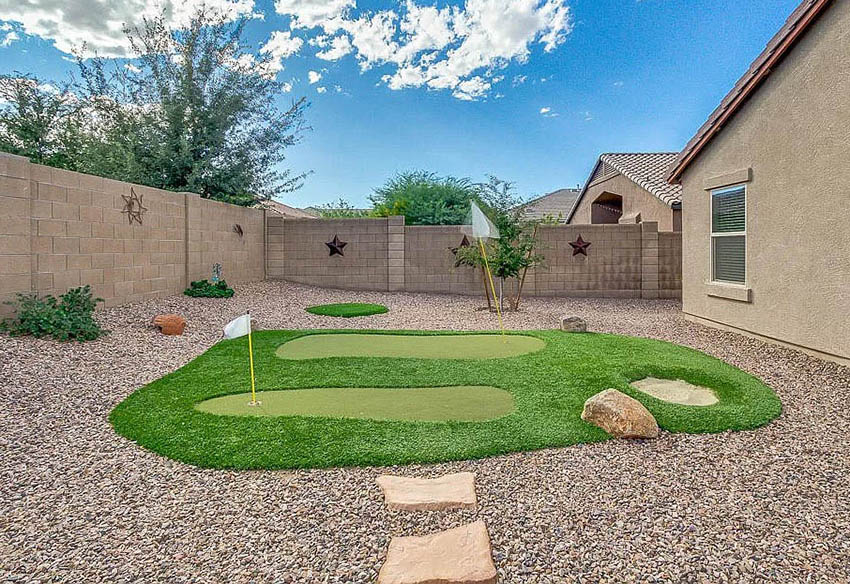
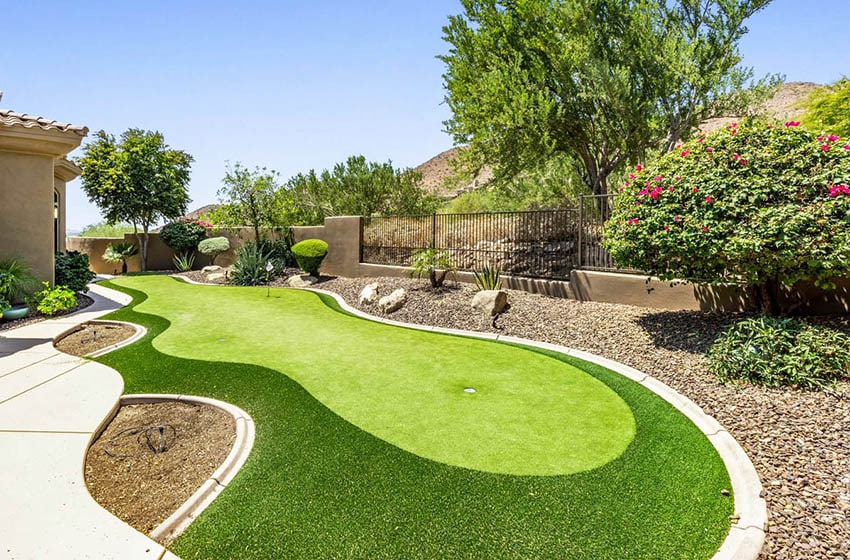
Artificial Grass for Playground
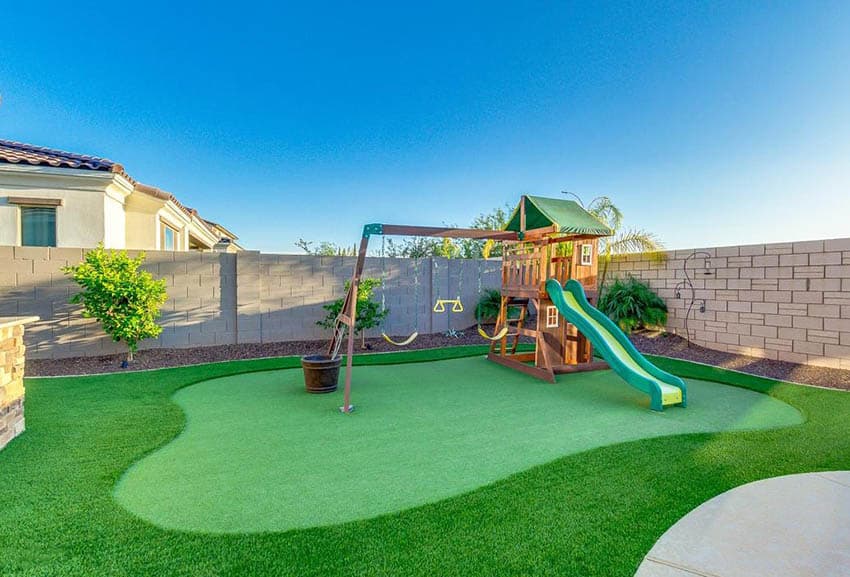
Artificial Grass Around Pool

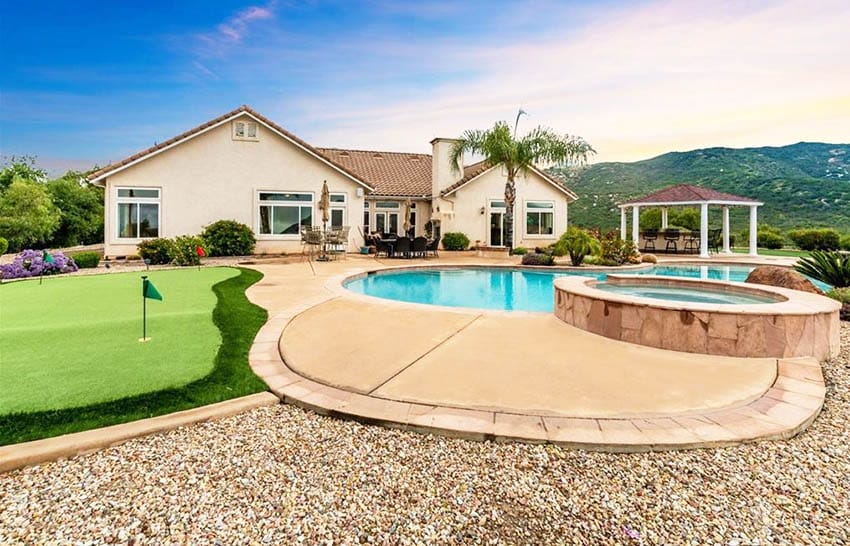
Artificial Grass on Decking
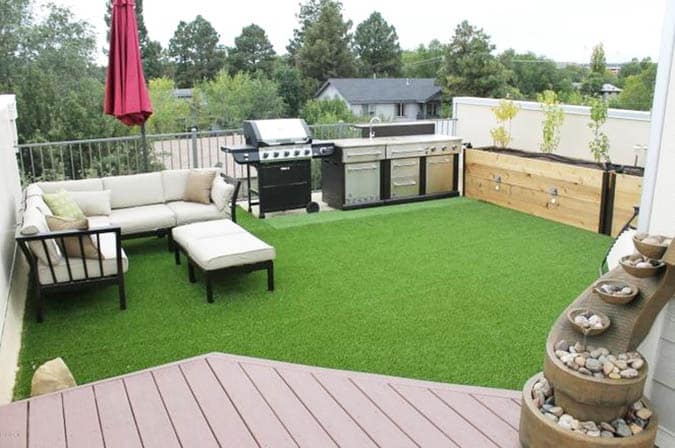
Artificial Grass for Balcony
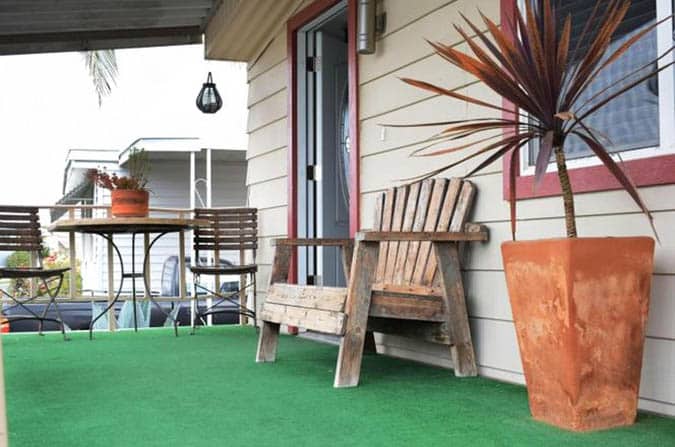
Here are some quick DIY steps to laying artificial grass on a balcony.
First, to install it on a concrete balcony you should thoroughly clean the area of application. Cleaning will also allow you to determine how well water drains from the space. This will help you determine where any puddling occurs for adding drainage.
Second, if the area is susceptible to rainfall or you want to be able to spray it down to clean, you will want to install drainage holes and fill them with 3/8″ shingle. This way any excess water will run out instead of puddling on the surface.
Try avoiding using recycled foam underlays as they can absorb water and expand as well as prevent the area from drying out. A 3/8 underlay with low water absorption is recommended.
Third, you’ll want to cut to size and lay down an artificial grass foam underlay. This will act as a shock pad which will provide a more comfortable surface, rather than stepping on hard concrete. An added benefit of using an underlay is it helps prevent ridges and depressions in your artificial grass from forming which look bad.
Forth, you will want to cut your artificial grass to fit the balcony area. Take extra precaution while cutting as you only get one chance to get it right. Secure all joints (if any) together using artificial grass tape to prevent separation.
Fifth, secure the perimeter of the artificial grass balcony by attaching glue to the foam and the concrete surface.
Concrete Steps with Fire Pit
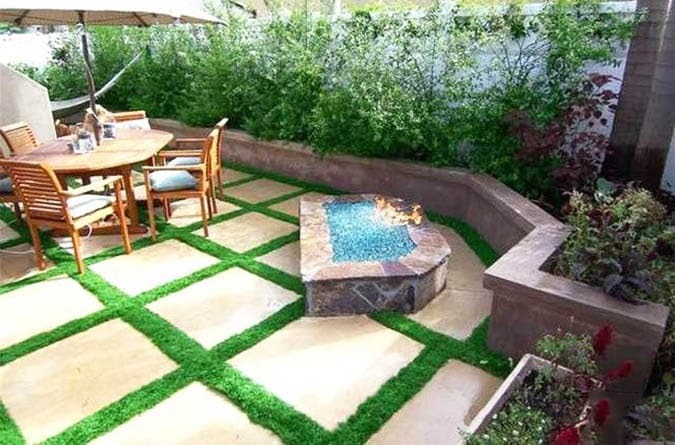
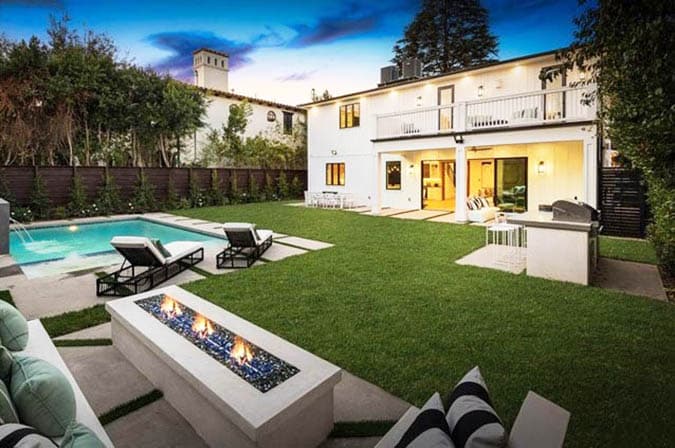
Outdoor Sitting Area
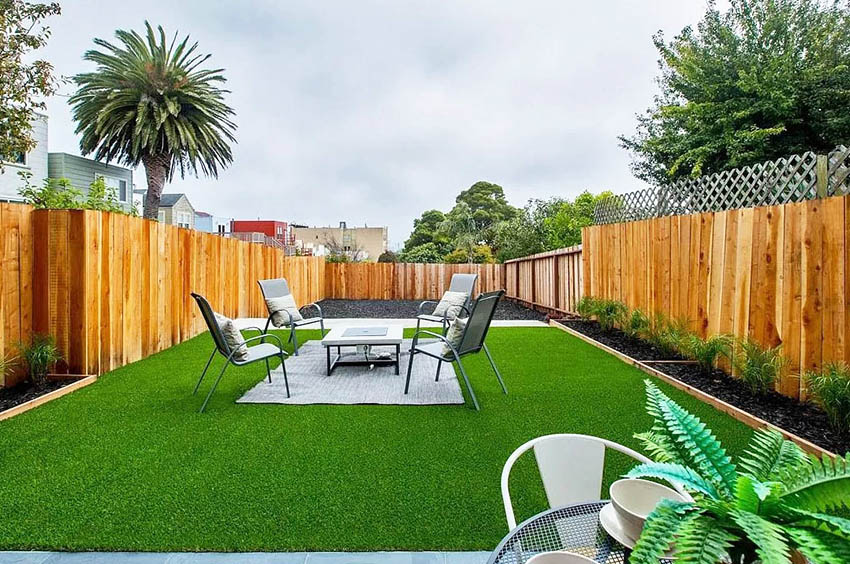

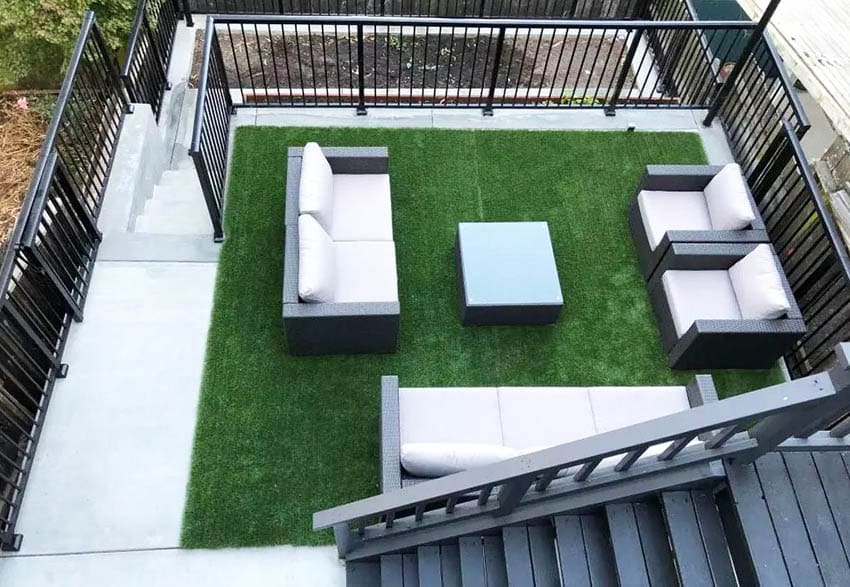
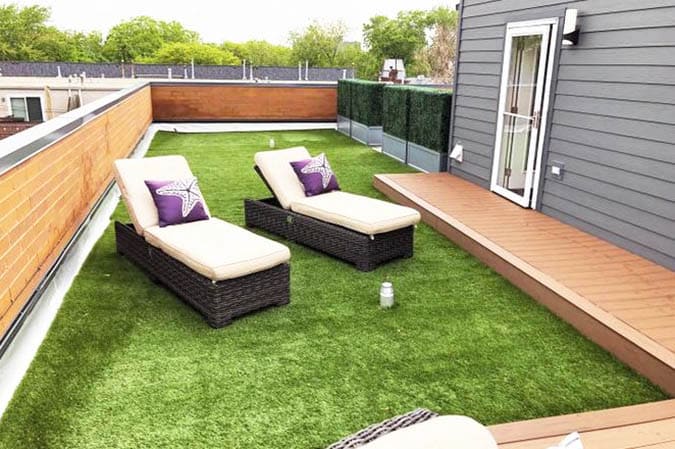
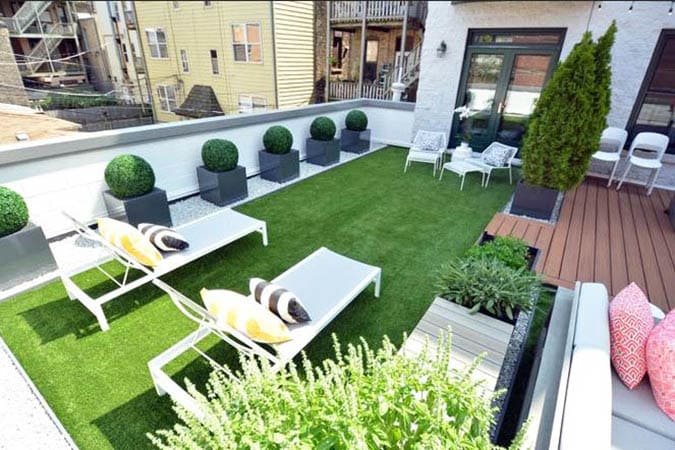
Where to Buy Artificial Grass
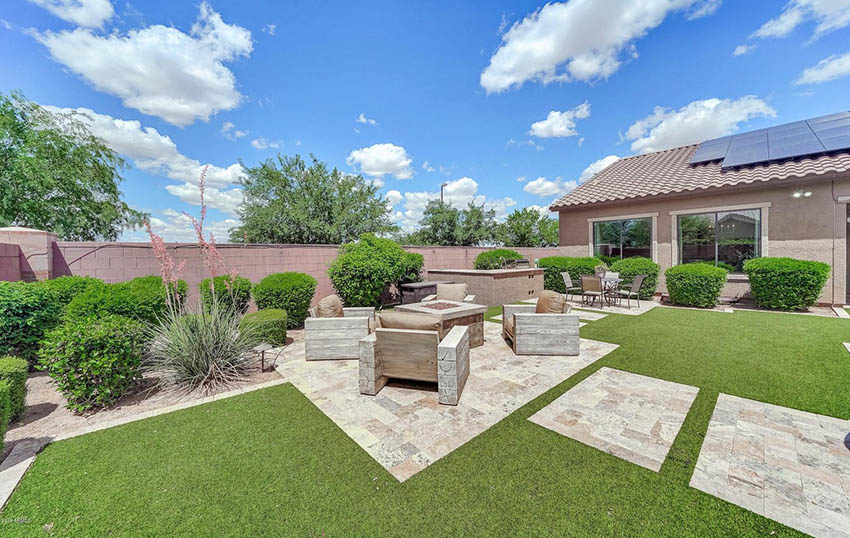
The artificial lawn has become an important part of 21st century living so once you begin your research you’ll find numerous places to purchase.

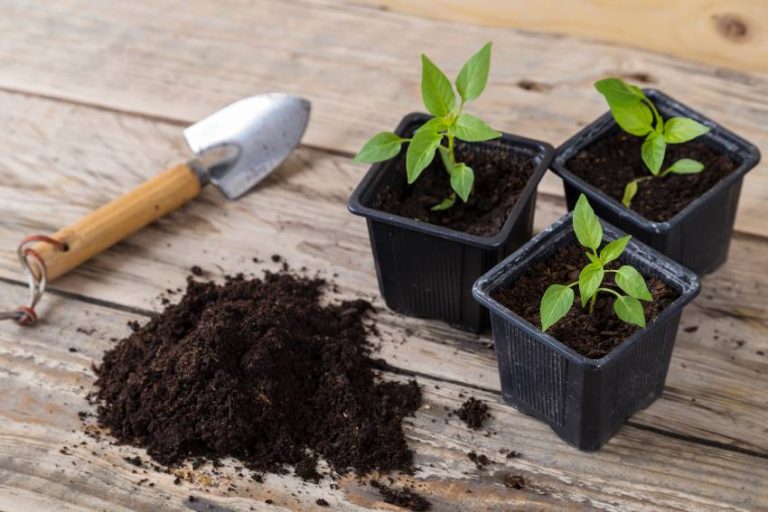

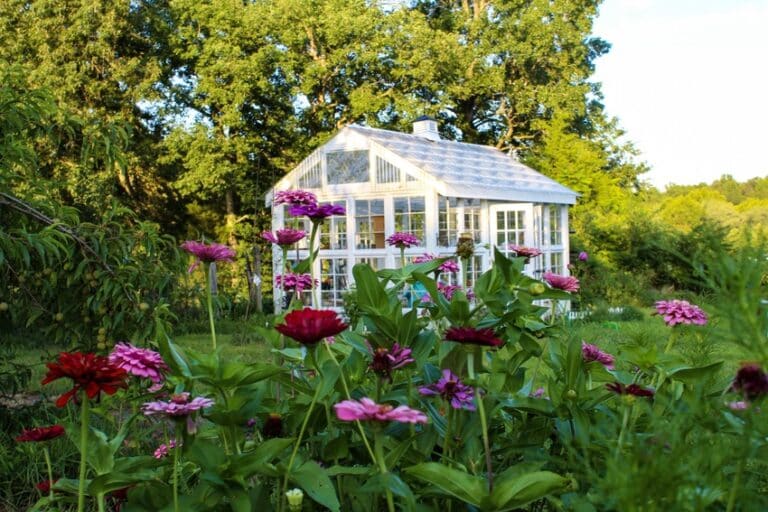
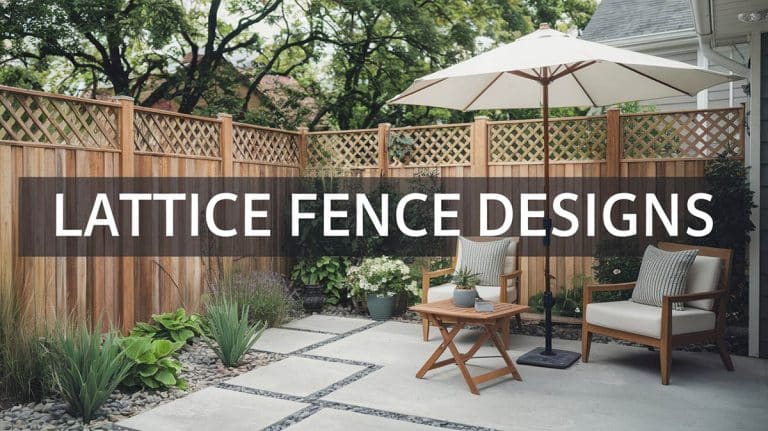
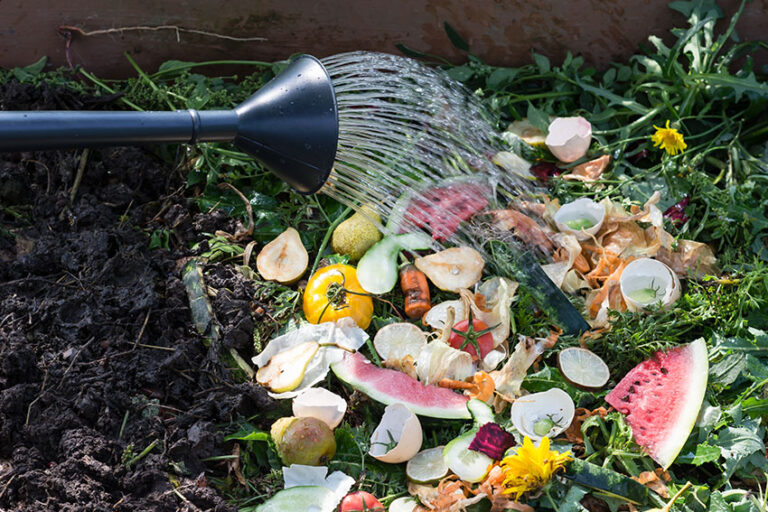
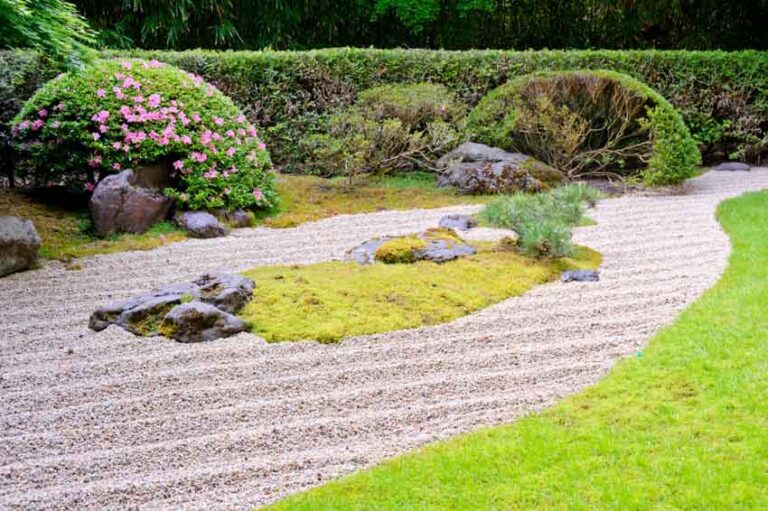
You really caught my attention with the backyard design that you showed that used artificial grass and a fire pit as a fixture. This could be great for us as a low-maintenance outdoor area to relax around when the nights are a little chilly. I’ll start working towards this by getting a residential artificial grass supplier to help us lay some out before getting the rest of the fixtures.